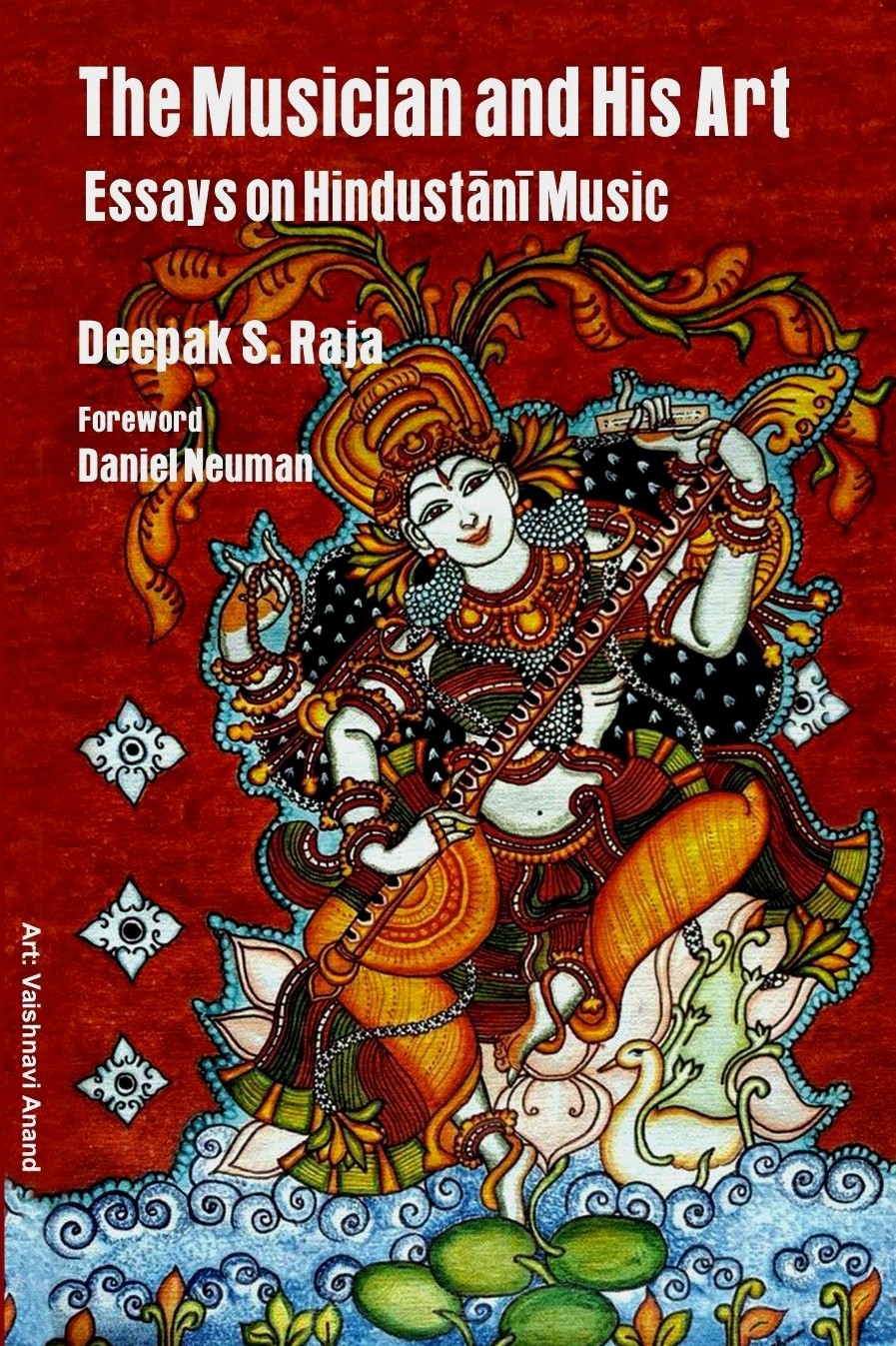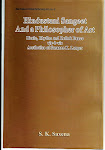Pandit Mallikarjun Mansur was amongst leading Khayal vocalists of the post-independence period, and the only significant male vocalist to have been trained by the founding family of the Jaipur-Atrauli gharana.
THE GHARANA
 |
| ALLADIYA KHAN |
The lineage regards Ustad Alladiya Khan, belonging to a family of Dhrupad vocalists practicing the Dagar Bani style, as the founder of its khayal vocalism. He was trained by his uncles, Daulat Khan, and Jehangir Khan. Alladiya Khan also admitted the profound influence of Mubarak Ali Khan, a vocalist of the Gwalior gharana who once served the Jaipur court.
The spread of the gharana’s style was greatly helped by his brother, Hyder Khan, who was also trained by their uncles. Both the brothers had gifted sons, who also disseminated the style of the gharana. Outside the founding family, the two most distinguished exponents of the Alladiya/ Jaipur-Atrauli gharana were Kesarbai Kerkar [1892-1977], trained by Alladiya himself, and Mogubai Kurdikar [1904-2001], trained by Alladiya Khan, and probably also by Hyder Khan. In the same generation, was also a great, but forgotten, vocalist, Lakshmibai Jadhav, who was trained by Hyder Khan. In the following generation, the most famous exponent of the gharana was a migrant from the Gwalior tradition, Mallikarjun Mansoor [1910-1992]. In the succeeding generation, Mogubai’s daughter, Kishori Amonkar, gave a new direction to Jaipur-Atrauli vocalism to emerge as the queen of Khayal vocalism.
Beyond the second generation, disciples, rather than descendants of the founding family, have kept the tradition alive. Alladiya Khan, his brother, sons and nephew became highly sought-after as teachers because of their sophisticated style, and the rarity and complexity of their raga-s. An aura of elitism developed around the Alladiya Khan style, and attracted mature musicians trained in other gharana-s. It is remarkable that, despite permitting migration from other gharana-s into its fold, the Jaipur-Atrauli gharana managed to maintain its distinctive flavour for at least three generations. Another interesting feature of the gharana is that, though founded by male vocalists, it has remained overwhelmingly dominated by female vocalists.
JAIPUR-ATRAULI STYLISTICS
According to Vamanrao Deshpande, the principal features of the Jaipur-Atrauli style are subtlety and complexity in all departments. The gharana has perfected the technique of linking swaras in a manner that reveals their individual beauty along with their role in phrasing appropriate to a raga. The melodic contours are distinctive for their curvilinear form, moving in loops. The tempo is moderate, and the melody is accompanied by a rhythmic swing. The melody and the rhythm are constantly in state of play with each other, though in fractions of beats. In its totality, Deshpande considers the orthodox Jaipur-Atrauli style high brow, and akin to a musical bank for musicians.
PANDIT MALLIKARJUN MANSUR
Mansur’s music represented a confluence of three influential musical traditions. In childhood, he was trained in Carnatic music. In his youth, he studied under one of the stalwarts of the Gwalior tradition. And, finally, he migrated to the Jaipur-Atrauli gharana, to achieve great success and distinction as an exponent of its unique style.
He did not have either an authoritative voice, or an imposing stage personality. He was a picture of simplicity, and humility, totally focused on his music. A man of deep spirituality, and spartan lifestyle, he made his impact by the mastery of his art, and seriousness of purpose. He had spent so large a part of his life as a virtual nobody that, when he finally became somebody, it no longer mattered to him.
By some conspiracy of circumstance, Mallikarjun had to wait till 60 to convert his musicianship into a career. Late though recognition was in coming, it was generous. Mallikarjun was decorated by the President of India with a Padma Shri, the Padma Bhushan, and the Padma Vibhushan. He was awarded the Sangeet Natak Akademi Award, an Honorary Doctorate of the Karnataka University, the Kalidas Samman of the MP government, and a nomination to the Karnataka State Legislative Council.
Childhood and grooming
Pandit Mallikarjun Mansur was born in a family of musicians at Mansur in Dharwad district of Karnataka state. His father was deeply involved with Kannada musical drama, and his brother was a member of a theatre troupe. At the age of eight, Mallikarjun quit school, and joined his brother’s troupe as a singer-actor. He became extremely popular in juvenile mythological roles as Dhruva, and Pralhad.
His first music teacher was Appayya Swamy, a vocalist, violinist and playwright in the service of the theatre company. Swamy taught Mallikarjun the basics of Carnatic music. Later, while touring with his theatre company, Mallikarjun had the opportunity of performing on stage before the Gwalior gharana stalwart, Nilkanthbuwa Alurmath. Alurmath was impressed by young Mallikarjun, and persuaded him to concentrate on serious music. Mallikarjun’s employers volunteered to pay Alurmath’s fees of Rs. 100 per month – a princely sum in those days -- for training Mallikarjun. After six years of rigorous training under Alurmath (age 12-18), Mallikarjun left the theatre company and moved to Bombay in search of a career and a Guru who would illuminate the path ahead.
During his early travels with theatre groups, Mallikarjun had heard the Jaipur-Atrauli gharana founder, Ustad Alladiya Khan, and wanted desperately to learn from him. Lacking in confidence to approach the great man, he obtained an introduction to his son, Manji Khan. After hearing the two 78 rpm discs Mallikarjun had released, Manji Khan accepted him as a disciple.However, Mallikarjun’s apprenticeship with Manji Khan ended within two years due to the mentor’s untimely demise in 1937.
The logical step thereafter was for him to continue studies with Manji Khan’s brother, Bhurji Khan, who was a classicist and an outstanding teacher. This apprenticeship lasted almost 10 years, during which Mallikarjun mastered the Dhrupad-based style of Alladiya Khan, and his repertoire of rare, complex, and esoteric raga-s along with the familiar ones. By his own claim, Mallikarjun had mastered 125 raga-s by the time he completed his tutelage with Bhurji Khan.
Towards the end of his life, he wrote a transparently candid autobiography in Kannada “Nanna Rasa Yatre” (My emotional journey). The work was written, according to him, as an expression of gratitude to his Gurus, and later translated into English by his son, Rajshekhar as "Rasa Yatra".
In the profession
Mallikarjun spent the prime of his life unable to convert his musicianship into a viable performing career. According to some accounts, his mother and wife managed the household with considerable ingenuity. He continued to broadcast over All India Radio, worked with the recording company, HMV, for a few years as a producer, and spent almost ten years as Music Advisor to the Dharwad station of All India Radio. These commitments kept him geographically grounded, and unable to create a following through concert appearances in different parts of the country until he was almost 60. Fortunately, his austere and disciplined lifestyle had kept him sufficiently fit and musically active to reap the rewards of late success.
In March 1969, Kamal Singh, the thumree and ghazal singer, invited Mansur to perform at a Sangeet Mehfil in Bombay. At this concert, the music world almost re-discovered Mallikarjun Mansur, after which he did not look back. He soon acquired national stature and popularity, which he retained until he could sing no more.
In addition to his redoubtable musicianship, the rediscovery of Mallikarjun at the age of 60 was probably aided by several environmental factors. In the 1970s, the stage was being taken over by the romanticists who were busy shedding the formal aloofness of khayal vocalism, and reaching out to larger audiences – Kumar Gandharva, Kishori Amonkar, and Jasraj. The towering male vocalists from the pre-independence era, steeped in orthodoxy, had mostly either retired or departed by 1970. Of the two remaining stalwarts, Ameer Khan departed in 1974, leaving Bhimsen Joshi as the sole significant orthodox survivor from that era. The post-independence generation of vocalists had yet to make a mark on the music scene.
Something of a vacuum appeared to exist in the orthodox segment of khayal vocalism, as also in male vocalism. In this environment, Mallikarjun had the additional advantage of being an exponent of Jaipur-Atrauli gharana, which still had a following nostalgic with memories of Kesarbai Kerkar, Mogubai Kurdikar and Lakshmibai Jadhav. The emergence of an outstanding male singer from this hitherto female dominated gharana in that environment was bound to be received with the enthusiasm that it did.
Musicianship
Mallikarjun Mansur had a high-pitched tenor voice, which lacked the depth of Ameer Khan and the authority of Bhimsen Joshi, but impressed with its charming vibrancy and sincerity. It had withstood the ravages of time well, and he could use it effectively in two octaves without loss of musical value almost till the end of his performing career.
He was justifiably admired for his vast repertoire of raga-s in khayal vocalism, as well as Nayasangeet and devotional songs in Kannada as well as Marathi. His khayal repertoire featured a judicious mix of rare raga-s like Basanti Kedar, Nat Bihag, or Khat, moderately uncommon raga-s like Sughrai, Kukup Bilawal, or Kamod, and popular raga-s like Yaman Kalyan, Deshkar, and Adana. His vilambit and madhyalaya khayal bandish-es were mostly drawn from the Jaipur-Atrauli tradition, while his drut khayal bandish-es were often from other gharana-s.
The most striking feature of Mansur’s music is immediacy with which it grips the audience. Mansur required no gradual build-up of the raga mood with a prelude alap before he launched the bandish-es. He could jump straight into percussion-accompanied music at almost any tempo, and establish an instant rapport with the audience. This direct, even dramatic, feature of his music perhaps went back to his childhood and youth as a singer-actor in the theatre. It was, incidentally, also suited to the orthodox Jaipur-Atrauli style of compact khayal rendition.
Mansur believed that his short, two-year training with Manji Khan of the Jaipur-Atrauli gharana had left the deepest impact on his style. It is debatable whether this exposure overshadowed his later and longer training with Bhurji Khan of the same gharana, or even erased all traces of Gwalior vocalism he had absorbed during his formative years. In its totality, however, he remained close enough to orthodox Jaipur-Atrauli stylistics for other members of the gharana to acknowledge him as one of their own.
© Deepak S. Raja 2011











